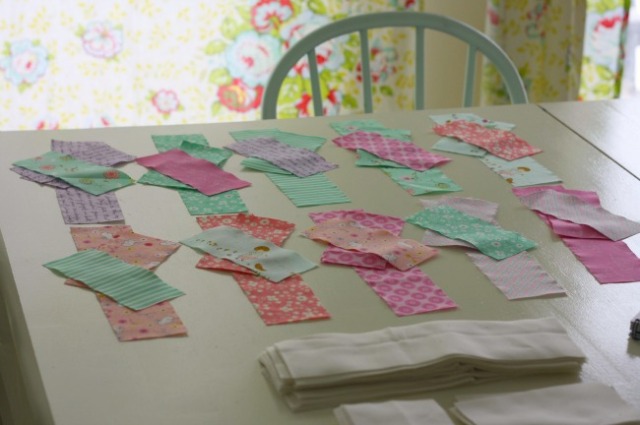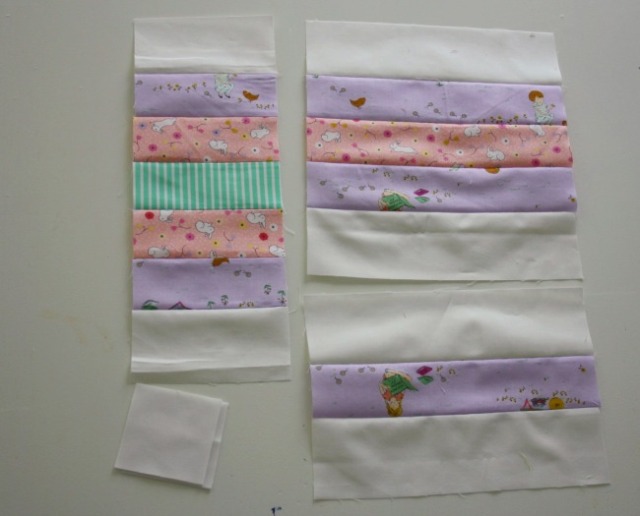![]()
I can never get enough tea in the winter, and love to use quart-sized mason jars to fuel my addiction. These jars are designed for canning, so adding boiling water is perfectly safe! This tea cozy insulates the jar (and protects your hands!) nicely, and it is also great in the summer for keeping your drink cold and preventing your glass from sweating.
Extra bonus – screw the lid on for a handy, spill-proof travel mug. Double-extra bonus – it’s perfect to make with scraps if you don’t have Charm squares handy!
These make a great holiday gift, especially paired with a box of your favorite tea! I’ve got a few more simple holiday gift ideas coming up soon at my blog at WaterPenny.net.



Optional: OR, you can piece the fabric as desired, as long as the end product is 13×5. If adding applique or other fabric design, do so at this stage.
- Layer outside fabric with quilt batting and sew layers together, quilting as desired. I did a quick wonky checkmark pattern, but this is a great place to try something new. (Note: You can pin before sewing, but I find ironing the layers together makes them hold quite nicely in a project this small.)
- Trim off any extra batting.
- Sew the short ends of the outside fabric (right sides together) to form a loop. Use a generous quarter inch seam (as opposed to a scant quarter inch).
- Repeat with the inside fabric to create a 13×5 piece of fabric sewn with the ends sewn together to form a loop (right sides together).
Assemble the bottom:
- Cut out two 4″ circles from charms and one circle from your batting. I trace a four inch embroidery hoop for this step.
- Fold circles in half twice and iron to create folded lines as shown below (top right) – with the crease lines marking four equal quarters.
- Layer your outside bottom circle with the batting as shown below (bottom right).
- Now take the side pieces from the previous step, and fold these in half twice; iron to create four fold lines – marking four equal quarters.
- Next, line up your four fold lines on your bottom circle and your side piece (right sides together). Pin where fold lines meet.
- After I have my fold lines pinned together, I add a lot more pins!
Note: In the outside layer, which has a layer of batting in the bottom circle, take care when pinning to make sure you are catching both the fabric layers and the batting layer together.
- Everything pinned? Sew the bottom layer to the sides, pulling the pins out as you go. This is the trickiest part. But you’re almost done!
- Turn the inside piece right side out. Tuck this inside piece into the outer layer, so that right sides are together and the batting is on the outside. Pin along the top at the fold lines.
- Sew along the top of the two pieces, using a quarter inch seam allowance. But wait! BE SURE to leave a two inch gap unsewn:
- Now reach in there to pull your piece right side out through the two inch gap you left unsewn at the top. You’re almost there!
- Tuck the inner lining in. I usually iron the top for a nicer finish, folding in the unsewn seams.
- Topstitch around the outer edge to finish.
Optional: Attach a cute vintage button to hang your teabag from so it doesn’t get lost in your mason jar!
Make it your own!
You can add binding around the top – just like a quilt! One the cozy below on the right, I used Aneela Hoey’s Sew Stitchy Spools, and added a fat binding using standard quilting methods to the top.













































































































































































































